1936: Florence Thomson, 32, is pictured with one of her children in Watsonville, California. It's actually an out-take from a photo session that created the iconic "Migrant Mother" image. Mrs. Thomson was born in 1903 to two displaced Native American Cherokees in what is now modern-day Oklahoma. She moved to California with her then-husband and had six children. The impromptu photo session in 1936 came about when the photographer, Dorothea Lange, encountered the family at the roadside after their car had broken down. Mrs. Watson had 10 children in all.
1949: The name Stanley Kubrick is synonymous with Hollywood, having directed no less than 13 huge films (A Clockwork Orange, the Shining and 2001: A Space Odyssey to name but a few), but the famous director actually started out as an apprentice photographer at Look magazine. This opportunity came about as a result of submitting his work to the magazine. This photo was taken as part of a series entitled "Chicago - City of Extremes".
1864: This framed picture is believed to be of Sergeant Samuel Smith, who was a Union soldier during the American Civil War, together with his wife Mollie. His daughters, Mary and Maggie, can be seen to the far left and right of the picture. Sergeant Smith fought for one of the 175 regiments of the United States Colored Troops that were formed following Abraham Lincoln's Emancipation Declaration of 1863. The regiments were largely, but not exclusively formed of African-American soldiers.
Around one-tenth of the entire Union force consisted of USCT troops. Totaling some 180,000 men, there were 2,700 USCT deaths during the Civil War, but a shocking 68,000 of them perished due to disease, which was the war's single biggest killer.
1918: Static kite balloons, which were filled with hydrogen gas and used to observe artillery attacks, were stored at Oklahoma's Fort Sill toward the end of World War I. This photograph captured a disastrous accident caused by a surge of static electricity that went up one of the kite balloons and ignited the highly-flammable hydrogen inside. Six troops perished in the flames that day.
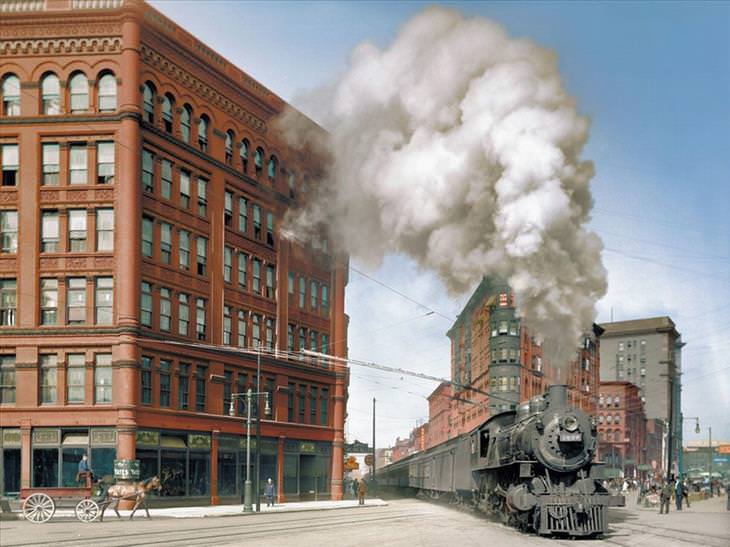
1909: The flagship train of the New York Central and Hudson River Railroad, the Empire State Express, makes its way past Washington Street in Syracuse, New York City. Furthering its infamy was the fact that it was the world's first passenger train to exceed 50 mph. It also undertook the longest scheduled non-stop train journey in the world at the time - some 143 miles between New York City and Albany. Trains had run through the middle of Syracuse since 1859, leading it to be called "the city with the trains in the streets". Trains ran through its streets until 1836, and the Empire State Express was the very last train to do so.

1918: The above photo is particularly special because it is known that it was taken at 1:52 pm on November 7th, 1918 - four days before the end of World War I. It depicts people out celebrating on New York City's Wall Street following a premature announcement of the end of the war. It was caused by Roy Howard, the president of the United Press, who circumnavigated various checks and balances to publish his story. The Armistice came into effect four days later, on the eleventh minute of the eleventh hour of the eleventh day of the year. Some 3,000 men lost their lives on the last day of the war, fighting raged on right until the announcement was made.

1919: The 369th US Infantry Regiment earned themselves the nickname "Harlem Hellfighters" due to their fearlessness in battle, never having one of their men captured, or even losing a foot of ground to the enemy. In early 1919, the Hellfighters were on their way back home. In the photo above, a few of them can be seen posing while wearing their Cross of War medals. They were met with a euphoric welcome on their return to New York City, proudly marching up Fifth Avenue.
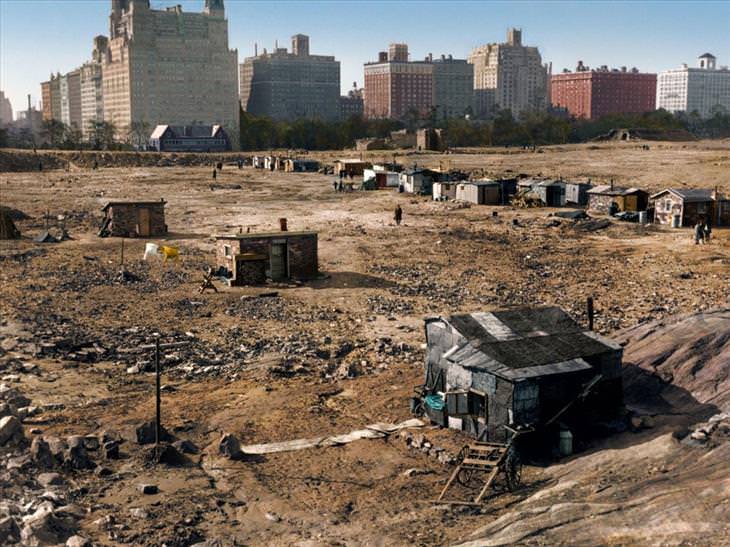
1933: The Great Depression was initiated following the stock market crash of 1929, leading to the explosion of unemployment and homelessness. This led to the rise of shantytowns all over the United States, not least New York City's Central Park. This "Hooverville", as this kind of settlement, was nicknamed, sprung up in the area of the park's lower reservoir. It had been drained and set aside to become a lawn, but the project was derailed due to the economic downturn. Destitute people literally lived in the shadows of opulent buildings such as the Beresford prior to being moved off the land and the resumption of construction in 1933.
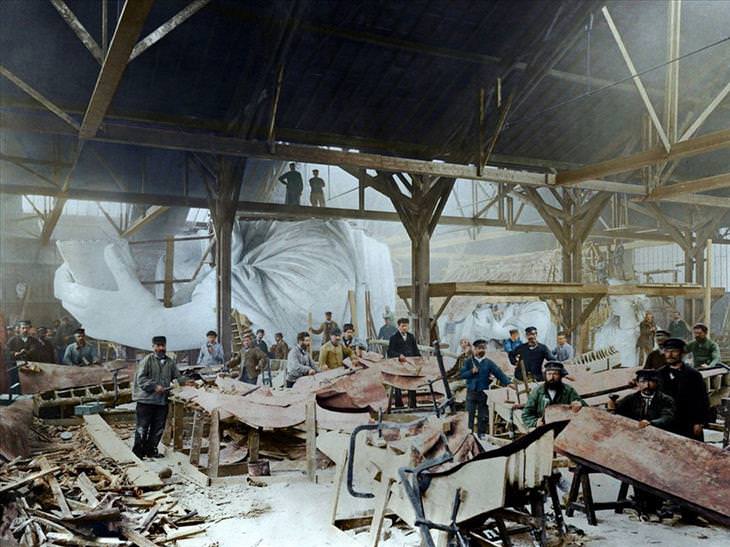
1882: Following the abolition of slavery in the United States, the French sculptor, Frédéric Auguste Bartholdi, wished to give a gift to the nation. The Statue of Liberty was what he came up with. Work on the statue began in his Parisian workshop in 1885 and was completed in 1887. This photo shows men at work inside the sculptor's workshop, with the statue off in the background. The Statue of Liberty references the US' abolition of slavery through the broken chain at its feet. Also, did you know that the man who engineered the Eiffel Tower, Gustave Eiffel, was drafted in to create the statue's inner framework?
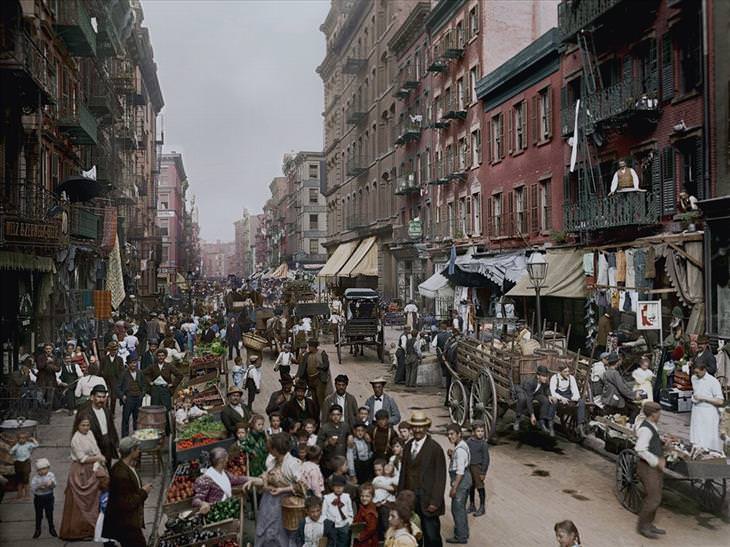
1900: By the turn of the 20th Century, nine out of ten people living in Manhattan's 14th Ward were of Italian descent. This photograph was taken on Mulberry Street and depicts a hive of activity - vegetable stalls, children running around barefooted, horses and carts and items of clothing being left out to air over the street's balconies. Mulberry Street got its name from Mulberry Bend, which was a curvature in the street surrounded by many mulberry trees. Sadly, not many Italian-Americans are left in Little Italy, with only a few Italian stores having a presence there in the present day.
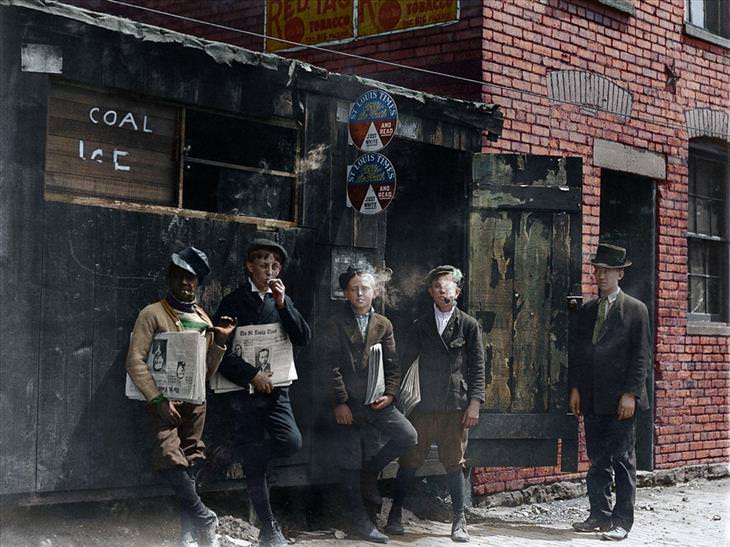
1910: These Newsies (or newspaper boys) were photographed in Jefferson, Missouri. All were puffing away on their respective cigarettes or tobacco pipes despite being of preteen ages. They were photographed by Lewis Hine, a photographer working for social reform in the United States and beyond. Hine had difficulty photographing child workers at their places of work, and this is because he usually had to seek permission from their employers first. This wasn't an issue with newsies, and photographs such as this one led to his creation of a body of work that helped to achieve a change in the cultural understanding of what it means to be a child, as well as a change in the law itself.
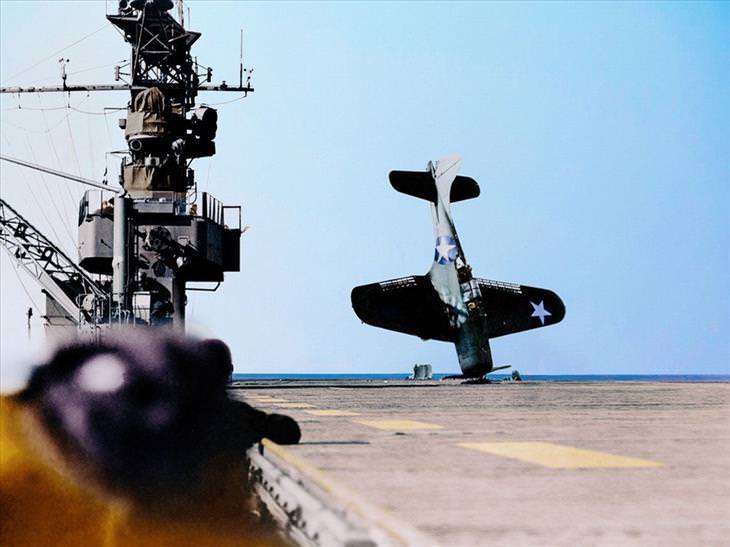
1943: This Douglas SBD "Dauntless" crash-landed onto an American aircraft carrier in the Pacific during World War II, and ground to a halt while balancing on its nose. The Dauntless was a two-person scout craft and dive bomber. It had a range of 1,115 miles and could reach speeds of 255 mph, making it extremely successful in battle. It was first used at Pearl Harbor and then more widely in the Pacific Theater, as well as seeing action in Europe. It is best known for inflicting fatal damage upon four Japanese aircraft carriers in 1942.
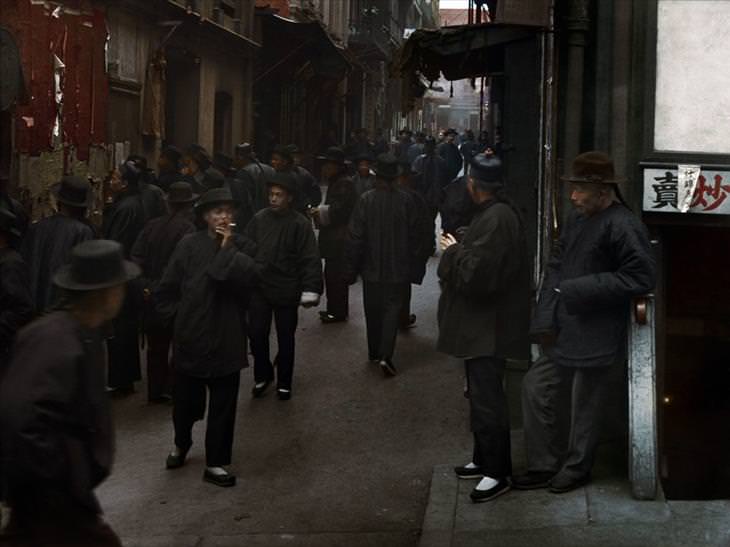
1896: The very first Chinese immigrants to arrive in San Francisco came off an American brig named Eagle in 1849. After they arrived, many Chinese were drawn to the opportunities provided by the construction of the Transcontinental Railroad, as well as the California Gold Rush. They faced pronounced racial discrimination, culminating in the total outlawing of Chinese immigrants for the next decade in 1892. This photograph, taken by San Franciscan photographer Arnold Genthe, depicts San Francisco's Chinatown full of men wearing chang shan shirts and sport Manchu queue hairstyles. This way of dress was mandatory for all Chinese men until the 1910s.
What makes this photograph particularly remarkable is the fact that it even exists - most photographs of San Francisco's Chinatown prior to the devastating earthquake and fires of 1906 were lost forever.
1947: A band of jazz musicians play to crowds in Times Square from the back of a horse-drawn cart. Art Hodes and his River Boat Jazz Band - Joseph "Kaiser" Marshall on drums, Henry “Clay” Goodwin on trumpet, Sandy Williams on trombone and Cecil “Xavier” Scott on clarinet and tenor sax, were promoting their concert to be held later that evening. The photograph was taken by writer and photographer William P. Gottlieb. The Washington Post columnist spent 10 years between 1938 and 1948 photographing the leading New York-based jazz musicians of the time.
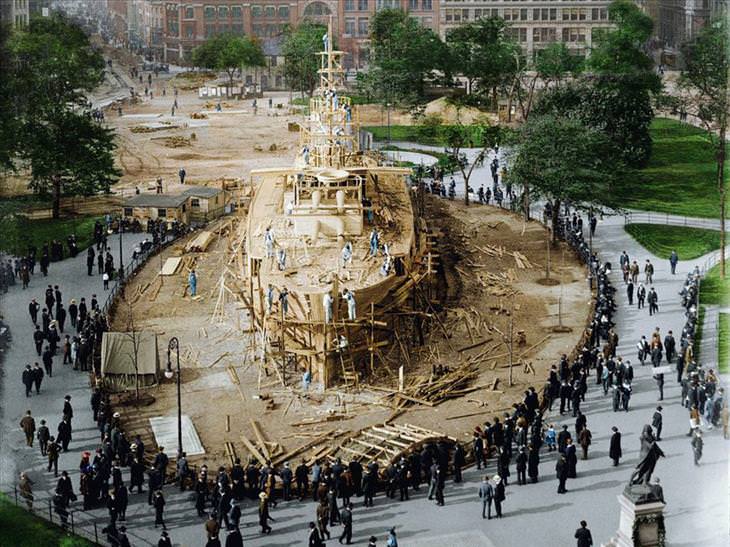
1917: In order to recruit seamen and sell Liberty Bonds between 1917 and 1920, the US Navy built the USS Recruit, a wooden battleship, in New York City's Union Square. It was a propaganda and training tool and even had its own captain, wireless, and quarters for officers and other crew. It was very successful, with some 25,000 recruits signing up for the Navy. it was also used as an event and reception location. The end of World War I didn't mean the immediate demise of the wooden ship either - it stood in Union Square until 1920 when it was dismantled.
